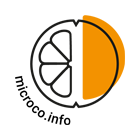You are here:
Curcumin
The turmeric plant, also called turmeric, yellow ginger or curcuma, originates from South Asia. Its rhizome, which is very similar to that of ginger, is used fresh and dried as a spice and traditional remedy. A purified extract from the rhizome of the species Curcuma longa is also used in the food industry as the dye E100.
In addition, food supplements with turmeric components are also offered. They can contain the ground rhizome or extracts made from it, or also the chemically precisely defined substance curcumin (for those interested: (E,E)-1,7-bis(4-hydroxy-3-methoxyphenyl)-1,6-heptadiene-3,5-dione). Curcumin makes up the main part of the so-called curcuminoids found in the rootstock of the plant with about 75 to 80 %.
Thus, there are numerous possibilities for consumers to come into contact with curcumin. With regard to possible health risks, curcumin has been assessed as a food additive by the European Food Safety Authority (EFSA). Based on existing data, the authority derived an acceptable daily intake (ADI) of 3 mg curcumin per kilogram body weight and day. The ADI indicates the amount of a substance that can be ingested daily over a lifetime without any impairment to health being expected.
The German Federal Institute for Risk Assessment (BfR) has used the ADI value as a basis for assessing the health risks of food supplements containing curcuma. The focus of the previous risk assessment was on preparations that additionally contain the substance piperine or piperine-enriched extracts from black pepper, which improve the intake of curcumin.
From the BfR's point of view, there is a fundamental need for further research, among other things with regard to the risk of possible liver damage, which was described in individual case reports after taking products containing curcumin in combination with piperine. In some cases, however, these preparations also contained other components that could also be (partly) responsible for this. From the BfR's point of view, a general assessment of the health risks is not possible at the present time, also because the products can differ considerably in their composition. However, investigations by state investigation offices have shown that the concentration of curcumin in food supplements sometimes clearly exceeds the ADI. In principle, the BfR emphasises that a longer-term, even slight exceeding of the ADI can result in adverse health effects, especially in sensitive individuals.
6/9/2023


